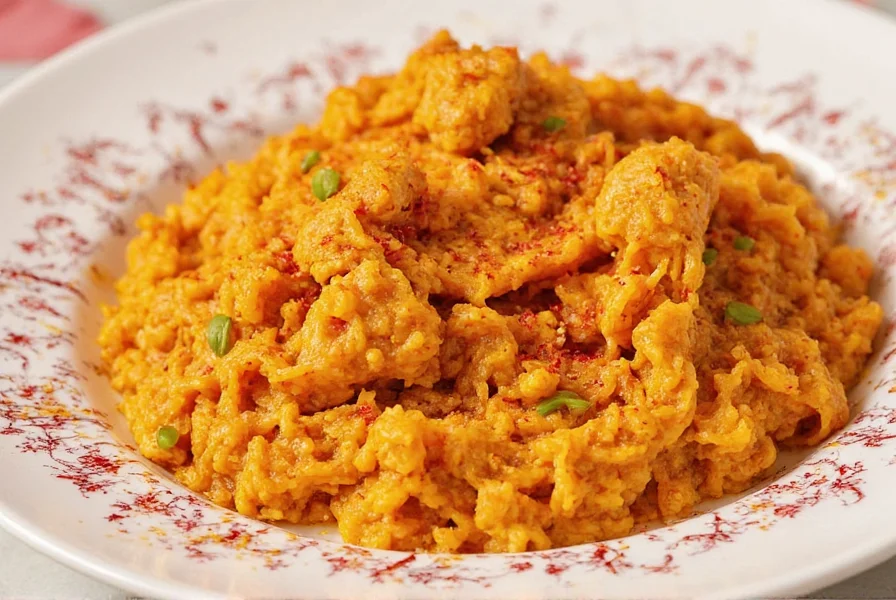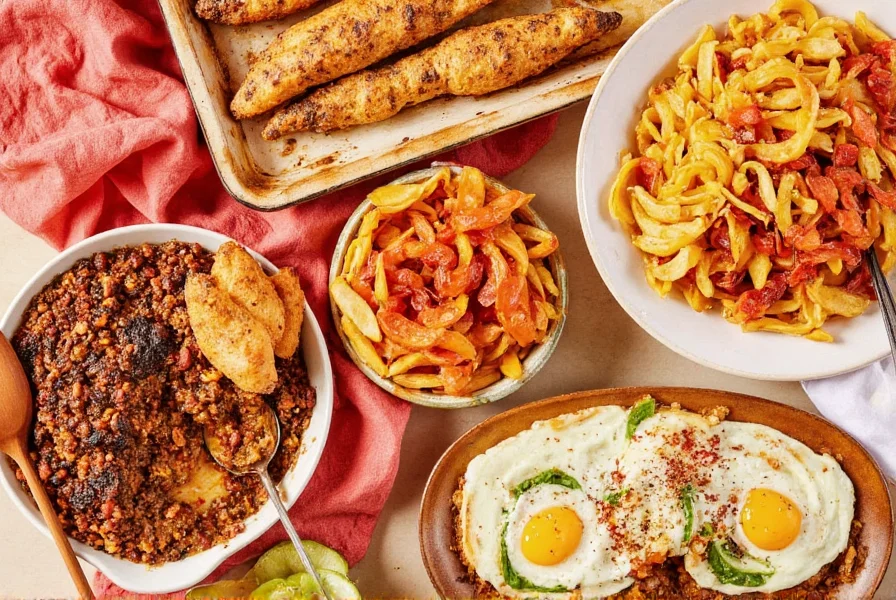The Art of Cooking with Saffron
Saffron isn't just expensive—it's transformative. This delicate spice, harvested from crocus flowers, delivers a distinctive golden color and complex flavor profile that elevates ordinary dishes to extraordinary heights. Understanding how to use saffron properly is essential for maximizing its value in your cooking. Unlike many spices, saffron requires specific preparation techniques to unlock its full potential.
When working with saffron, quality matters significantly. Look for deep red threads with minimal yellow styles—this indicates higher potency. Store saffron in an airtight container away from light and moisture, where it can maintain quality for up to two years. For optimal flavor extraction, always crush saffron threads gently between your fingers before steeping in warm liquid for 15-20 minutes. This simple technique dramatically improves color release and flavor distribution in your authentic Spanish paella recipe with saffron or other dishes.

Top 5 Saffron Recipes Worth Every Penny
Given saffron's premium price point, selecting recipes that showcase its unique qualities is crucial. These five dishes represent the pinnacle of saffron usage where the spice isn't just an ingredient but the star of the show.
| Recipe | Saffron Amount | Prep Time | Why It Shines |
|---|---|---|---|
| Spanish Paella | ½ tsp threads | 15 min + steeping | Creates signature color and earthy complexity |
| Risotto alla Milanese | ¼ tsp threads | 10 min + steeping | Infuses creamy rice with golden hue and floral notes |
| Persian Tahdig | ⅛ tsp threads | 5 min + steeping | Transforms crispy rice into aromatic masterpiece |
| Swedish Lussekatter | ⅛ tsp threads | 20 min + steeping | Adds distinctive color and subtle flavor to sweet buns |
| Saffron Aioli | ⅛ tsp threads | 15 min + steeping | Elevates simple sauce with complex floral notes |
Perfect Spanish Paella with Saffron
This authentic Spanish paella recipe with saffron demonstrates why the spice is worth its weight in gold. The traditional Valencian preparation relies on saffron for both its vibrant color and distinctive flavor that defines the dish.
Ingredients:
- ½ teaspoon saffron threads (about 30 threads)
- 3 tablespoons warm broth or water
- 2 cups bomba rice
- 4 cups fish or chicken broth
- 1 lb mixed seafood (shrimp, mussels, clams)
- 1 large onion, finely chopped
- 1 red bell pepper, sliced
- 4 garlic cloves, minced
- 1 large tomato, grated
- ½ cup olive oil
- Salt to taste
- Lemon wedges for serving
Method:
- Crush saffron threads gently and steep in 3 tablespoons warm broth for 15 minutes
- Heat olive oil in paella pan over medium heat; sauté onions, peppers, and garlic until soft
- Add grated tomato and cook until sauce thickens (about 5 minutes)
- Stir in rice to coat with sofrito, cooking for 2 minutes until edges become translucent
- Pour in saffron-infused broth followed by remaining hot broth
- Arrange seafood on top, season with salt, and cook uncovered for 18-20 minutes without stirring
- Let rest 5 minutes before serving with lemon wedges
The key to perfect paella is the saffron infusion technique—never add dry threads directly to the rice. This traditional saffron rice recipe demonstrates how proper saffron usage creates the dish's signature golden color and complex flavor profile that defines authentic Spanish cuisine.
Italian Risotto alla Milanese
This classic Northern Italian dish showcases saffron's ability to transform simple ingredients into something extraordinary. The Milanese version stands apart from other risottos through its distinctive golden hue and subtle floral notes.
For the best results with this how to use saffron in risotto technique, steep ¼ teaspoon saffron threads in 2 tablespoons warm broth while preparing your risotto base. Add the infused liquid during the final cooking stage when the rice is nearly done. This preserves saffron's delicate flavor compounds that can dissipate with prolonged cooking.
Unlike paella where saffron is added early, risotto benefits from later saffron incorporation. The starch in the nearly-cooked rice helps bind the saffron compounds, creating a more stable golden color that won't fade as the dish rests. This technique represents one of the most effective saffron measurement for cooking methods for dairy-based dishes.

Maximizing Your Saffron Investment
Given saffron's premium price, using it efficiently is essential. These professional techniques help you get the most from this precious spice:
Proper Steeping Methods
The temperature of your steeping liquid significantly impacts saffron's performance. Warm (not boiling) liquid between 140-160°F (60-70°C) extracts the maximum color and flavor compounds without damaging delicate aromatics. Steep for 15-20 minutes—longer steeping times yield diminishing returns.
Saffron Substitutions: When They Work (and When They Don't)
Turmeric offers color but lacks saffron's complex flavor profile. For saffron substitute in recipes, consider these options:
- For color only: Turmeric (use sparingly—¼ teaspoon)
- For mild flavor approximation: Safflower (use double the amount)
- For baking: A pinch of paprika with turmeric for color
Remember that no substitute truly replicates saffron's unique characteristics. These alternatives work best in dishes where saffron isn't the star ingredient. For authentic Persian saffron rice recipes or Spanish paella, substitutions significantly alter the dish's character.
Storage Techniques for Longevity
Store saffron in an opaque, airtight container in a cool, dark place. Properly stored, saffron maintains quality for 18-24 months. Never store in the refrigerator where moisture can degrade quality. For long-term storage, divide your saffron into small portions and freeze what you won't use within six months.
Beginner-Friendly Saffron Applications
If you're new to cooking with saffron, start with these approachable applications that deliver impressive results with minimal technique:
- Saffron simple syrup: Steep ⅛ teaspoon saffron in ½ cup warm simple syrup for vibrant golden cocktails or desserts
- Saffron butter: Infuse softened butter with saffron for bread or seafood dishes
- Saffron rice pilaf: Add saffron infusion to your favorite rice pilaf recipe for instant elevation
- Saffron honey: Warm honey with saffron threads for unique glaze or tea sweetener
These easy saffron recipes for beginners require minimal technique but deliver impressive results that showcase saffron's transformative power. Each application teaches fundamental saffron handling skills while producing delicious results that justify the spice's premium cost.
Frequently Asked Questions
How much saffron should I use per serving?
For most dishes, 20-30 saffron threads (about ⅛ to ¼ teaspoon) will properly flavor 4 servings. Start with less—you can always add more, but you cannot remove excess saffron once added. Delicate dishes like risotto require less saffron than robust dishes like paella.
Can I use powdered saffron instead of threads?
While powdered saffron is available, whole threads are preferable. Powdered saffron often contains fillers and loses potency more quickly. If using powder, reduce the amount by half compared to threads, as it's more concentrated but less fresh. Always purchase saffron from reputable sources to avoid adulterated products.
Why is my saffron not coloring my dish properly?
Insufficient color extraction usually results from improper steeping technique. Ensure you're using warm (not boiling) liquid and allowing 15-20 minutes for steeping. Acidic ingredients can also affect color development—add lemon juice after saffron infusion for best results. Low-quality saffron with excessive yellow styles rather than red threads will also produce weaker color.
How can I tell if my saffron is fresh?
Fresh saffron should have a strong hay-like aroma with floral notes. When rubbed between fingers, threads should leave a vibrant yellow-orange stain. Dull color, weak aroma, or minimal color release when steeped indicate aged or low-quality saffron. Properly stored saffron maintains quality for 18-24 months.
What's the most cost-effective way to use saffron?
Maximize value by using saffron in dishes where it's the star ingredient rather than one of many spices. Focus on recipes like risotto, paella, or baked goods where saffron's unique flavor shines. Proper storage in an airtight container away from light extends shelf life. Divide large purchases into small portions to minimize exposure to air and moisture.











 浙公网安备
33010002000092号
浙公网安备
33010002000092号 浙B2-20120091-4
浙B2-20120091-4